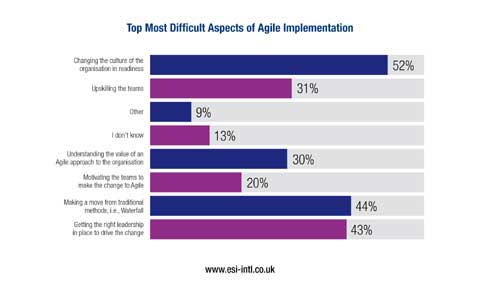People and team member management for Agile project management and Scrum software development teams.
Technical debt is a well-known concept in Agile software development. Technical Debt is defined as the eventual consequences of poor or evolving software architecture and software development within a codebase. In this blog post, Steve Blank discusses the concept of organizational debt.
As Agile product and project management approaches are adopted by large organizations, they have to coexist with a typical entity of big companies: the Project Management Office (PMO). A recent report from ESI International explores how the PMO staff views the challenges of implementing Agile in their organizations.
For best results from Agile, you need a solid team. If you belong to, manage, or lead an Agile team, you’ve probably seen that process alone doesn’t translate to great results – and that having a cross-functional group of 7 +/- 2 “resources” doesn’t either. Instead, what makes Agile come to life is the team’s motivated, engaged individuals who communicate, collaborate, and respond effectively. In many organizations, teams rely on their leaders and managers to help them grow and become stronger.
The first value of the Agile Manifesto is to prefer “Individuals and interactions over processes and tools”. But how can you know if your individuals and your teams like your current Agile approach. In his article, Henrik Kniberg present a simple tool to assess the health of your Scrum teams.
In large Agile projects where a Scrum team cannot deliver the full system, you have different options to organize your team. You can use feature teams that work on a set of user stories or component teams that work on a subsystem or component. In his blog post, Michael Valenta reports his experience as a ScrumMaster from the usage of features teams.
This talk provides a is a reflection on what Michael De La Maza has learned as an Agile Coach about communication, emotional stress and team organization.
It’s very easy to become hierarchical and turn into a “bank” when software company is growing fast. Is there a way to avoid that? How to keep the focus on value creation? What about Value departments, not Functional departments? This presentation shares ideas what we can learn from Scrum and apply in organizational design. It shares hypothesis how a company could look like when everybody is focused on value creation.








